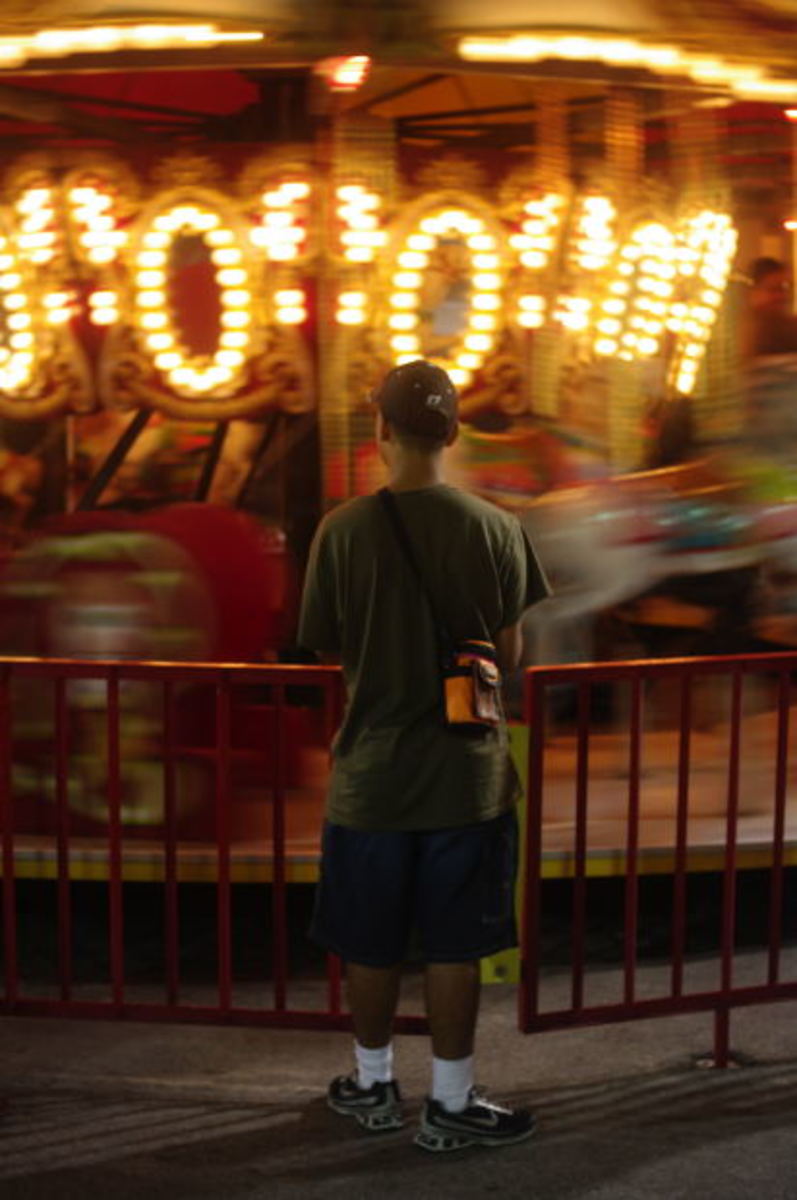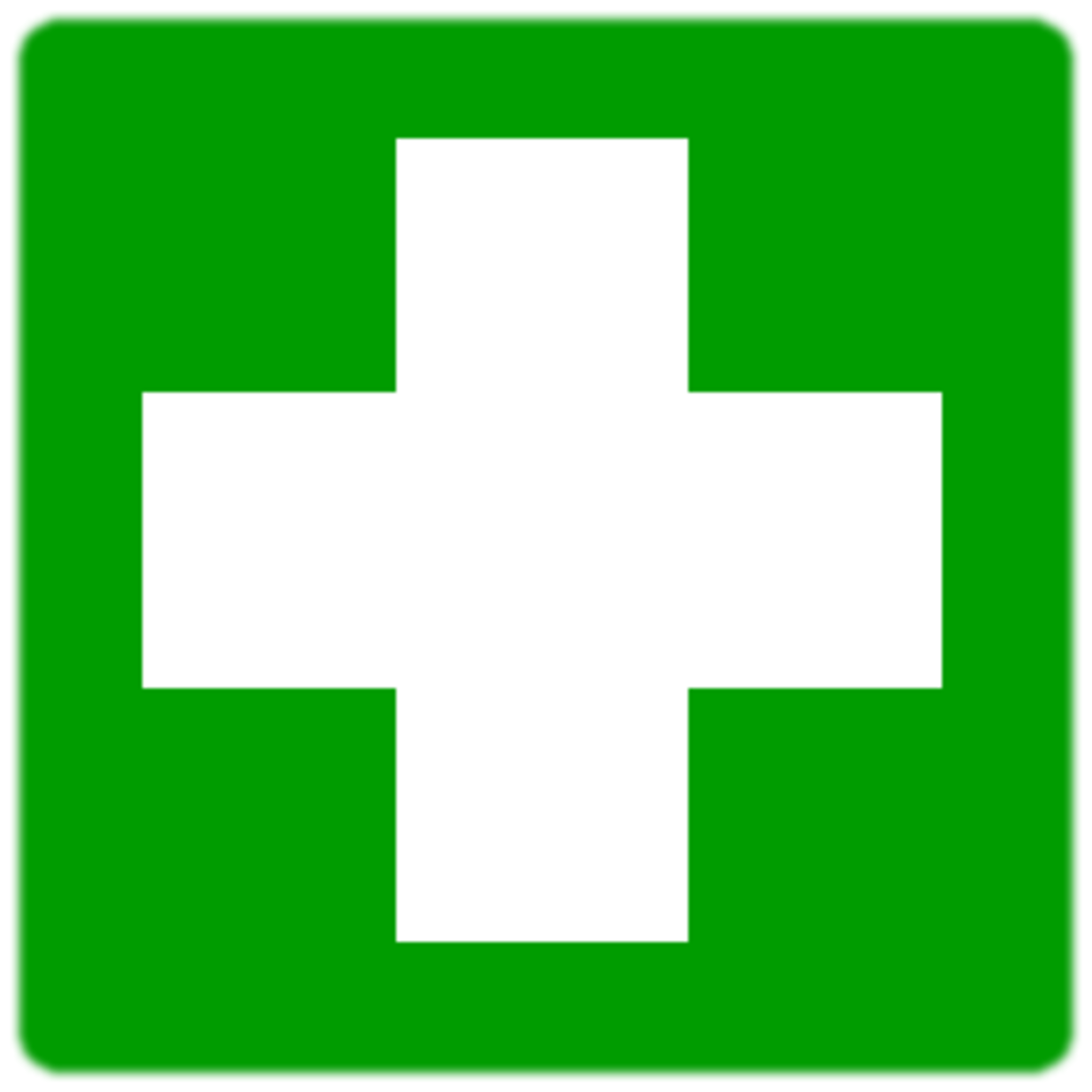Hiking Safety Tips
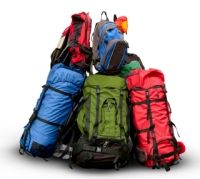
Basic Safety Tips for Hikers
Hiking isn't typically dangerous. Much more often it's a great pleasure, even an adventure. But you're outside, sometimes far from 'civilization' and you can get injured or worse. These things happen. It pays to heed some common sense safety tips and learn how to be safe.
Tip #1 - Don't travel alone
Like any rule, there are exceptions. If you're just going for a stroll in a nearby, well-traveled area you're as safe there as anywhere. But if you travel through heavily forested areas, with steep canyons and winding trails, you can easily get lost. And, of course, there are lots of gradations in between. Use your judgment.
Traveling with a partner will help you in many ways, especially if he or she is an experienced hiker. People in pairs are much less likely to panic. They can assist one another up steep grades and apply first-aid when needed.
He or she can travel back to the trail head if you're injured. And, if needed, body heat can be much better conserved when there are two traveling together. Hypothermia has killed more than one lost hiker before they could be rescued.
Tip #2 - Know where you're going
This tip is a lot like #1. The same concern applies - you don't want to get lost. Stay on clearly marked or well-traveled trails until or unless you are experienced enough to take the uncommon route. Yes, they're sometimes not as interesting. But getting lost is interesting in a very unpleasant kind of way.
A map, a compass and/or a GPS unit is a must for any kind of serious hike. Naturally it has to be usable in the area you hike. Not all units will continue to function in every area. Get the details of where you plan to go and ask someone who knows.
Tip #3 - Take some basic gear
You can go overboard on gear. But for anything more than a simple, two-hour hike over easy terrain, a large chunk of peace of mind can be bought very cheaply.
Take a lighter or matches. Matches can get wet, but a lighter can run out of fuel. No plan is perfect. A knife, especially one with lots of genuinely useful (as opposed to merely impressive) gadgets can be a literal lifesaver.
A simple first aid kit can also be a lifesaver. Gauze and bandages, anti-bacterial cream and other standard items are essential. Anti-itch and sunburn pain reliever can be greatly appreciated sometimes. Aspirin is one of pharmacology's most under-appreciated drugs. All these things are small and lightweight. No need to take a miniature doctor's office, just the basics.
Of course, you have to have some first-aid knowledge. There are times when aspirin can be harmful. Gauze and bandages don't do you any good if you don't know the difference between venous and arterial bleeding.
A flashlight is a must. Toilet paper can be really handy, too.
Tip #4 - Take basic provisions
Water or other fluids like sports drinks are an obvious essential. You can lose a lot of fluid even over a two-hour period on a hot day. Heat stroke can kill, but is easily preventable. Even dehydration can radically reduce physical performance. Just remember water weighs about 8 lbs per gallon. Take what you need, not much more.
Except in emergencies, avoid drinking out of streams. Forget TV commercials. Natural water sources, not always but often, are loaded with bacteria. Just remember, animals bathe and eliminate in them.
Take enough food to last you the anticipated hike time. About 1 lb per day (depending on what you bring) is average for a medium-sized male. You can last longer without food than water, so trade off when you have to.
Tip #5 - Exercise common sense.
Among other things that means don't get carried away with your enthusiasm - and a belief in your invincibility - and tempt fate. Despite what you may have read in some places, Mother Nature is quite indifferent to hurting you when you do dumb things.
Photo Source: Deposit Photos
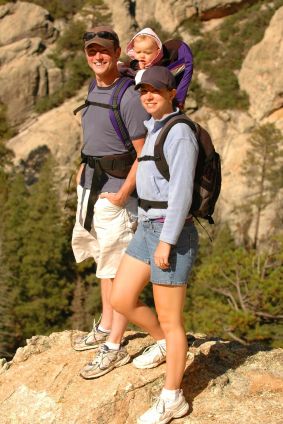
Hiking - Basic First Aid
Three of the more valuable skills hikers can learn are CPR (Cardio-pulminary Resuscitation), executing the Heimlich maneuver and dealing with fractures. Not only are those three responses to serious issues but, after cuts and sprains, choking and bone breaks are among the more likely problems. Keep in mind, though, that 'more likely than other problems' doesn't mean 'likely' - the odds are still low.
CPR - Cardio-pulminary Resuscitation is a technique to re-start normal breathing. It's far better to take an actual class where you can receive hands on training and practice. But here are some basic tips that could save a life.
If you can, call 911 or a local rescue team immediately. Call out loudly for a physician or trained specialist. You never know who is hiking on the trail near you. If you must go ahead, especially if you see the victim turning a bluish tint, there are several things to check.
Consider how the person came to have the problem. If they were swimming in cold water they may just need warming up. If they went under and were pulled out, you should put him or her on the stomach and try to remove water by modest, short compression on the diaphragm, located above the stomach and below the chest.
Then, put the person on his or her back and hold the nose. Breath into the mouth, covering his or her mouth with yours and watching out of the corner of your eye for chest expansion. Then let go and tilt the body to allow expulsion of water. Repeat, giving two breaths of two seconds each.
If that has no effect, try chest compressions. Push down firmly along the sternum above the diaphragm. Repeat several times, about once per second.
Heimlich - The Heimlich maneuver is designed to remove foreign objects from the air passages. Food or other obstructions can interfere with breathing. Look for obstructions in the throat. Do NOT slap the victim on the chest - that will tend to lodge the object even deeper.
Instead, stand the person up and move behind them. Grasp your own wrist with the opposite hand. The bone at the base of your thumb should be against the victim's body. If you can't stand them up, at least make sure the face is generally forward and down. Let gravity work for you, not against you.
Give a sharp, short, firm jerk inward against the diaphragm. Repeat a few times, watching for the object to dislodge. Take care not to press against the rib cage, but only against the diaphragm. You don't want to crack any bones.
Fractures - Fractures can vary in seriousness, everywhere from an invisible toe break that simply makes walking painful to a compound fracture. Taking a first aid course is preferable, but here are some guidelines for treating some fractures.
If the bone is protruding from the skin, this is a compound fracture and the most serious. Not only is the bone badly broken, but rupture of the skin leaves an opening that is prone to infection.
Cover the wound with sterile gauze and get professional help as quickly as possible. Do not try to straighten the fracture. If you need to immobilize the limb, apply a splint to keep it at the same angle.
Find a straight stick or use a piece of walking pole or other straight, rigid object. Pad the splint and wrap with an elastic roll bandage or medical tape. In the absence of supplies, look for a thin, strong vine to tie the splint to the limb. Tie firmly, but take care not to completely shut off blood flow to the limb. Gangrene can result.
In all cases, seek professional medical help as quickly as possible. NEVER continue the hike in any of these cases.
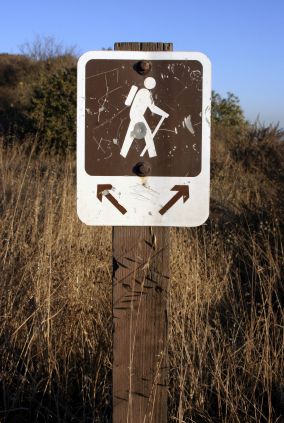
Hiking - Getting Lost and Getting Out of It
Getting lost is among the top potential problems for beginning hikers.
It's easy to step into the forest a few yards and lose your bearings. You may step a few more yards in the direction you think you came and get still farther away from your trail. Or, you may misread a map and wind up on a trail very different from the one you had planned.
Either way, you're lost because you don't know where you are, or how to get where you want to go. Here are a few bits of advice about how to avoid that fate, and what to do in the event you find yourself in it anyway.
To avoid getting lost in the first place, exercise some simple guidelines. Travel with an experienced partner. Stay on well-marked trails until you yourself become experienced enough to venture off into the wilderness. Don't exceed your climbing or water-fording abilities, and err on the side of caution. Use maps and a compass or GPS unit or both, GPS units don't always work in the wild.
If you get lost anyway, stay calm. That will help you think clearly and also decreases the amount of spent fluid from heavy breathing.
If you can, do the obvious and re-trace your steps to the point you last knew your location. Look around for landmarks passed on your way. You should try to be aware of your surroundings. After all, one of the reasons for hiking is to enjoy the scenery.
While you take in the scenery, make a mental note of hills, large rock outcroppings, forest stands, streams, etc. These will give you a mental map of your area.
In any sloping area with water, a river or a stream, water will run downhill. Many trailheads start at the bottom. 'Bottom', here, is a relative term. Trailheads don't typically start at the beginning of a river, but many start at the point the river bends and a large, open flat area of ground is found.
If you're hiking up high enough, you may well be in an area with few trees. But you may also have a high view from certain spots. Use that vantage point to look down the mountain for trails, campsites, etc. Find the sun and note which way it's moving. Keep yourself, even along a winding path, in the general direction you want to go.
Don't be shy about shouting or using a whistle to alert others to your condition. Better to look foolish than to stay overnight unprepared and without food or (worse, enough) water. If it's nearing dark and you have a flashlight (as you should) wave it above and then in front of you. Learn the Morse code for S-O-S and signal repeatedly.
Make sure that before you leave home, someone knows when to expect you. That way, if you're gone too long, they know to alert search-and-rescue to begin looking for you. You would be far from the first hiker to get lost. It happens even to experienced people.
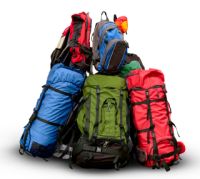
Hiking - Basic First Aid Kits
Millions of hikers travel along wilderness paths every year, enjoying the experience without injury. But, unfortunately, accidents do happen. A little knowledge can help quell the panic and reduce the seriousness of most of them.
First, a little preparation.
For anything longer than about a two-hour hike, you should do some planning. Have a good idea of where you are going. Pack a first aid kit. Your first aid kit should contain at least the following useful items:
- Gauze and elastic roll bandages
- Adhesive bandages of various sizes
- Anti-bacterial cream or spray
- Aspirin or Ibuprofen (depending on stomach sensitivity)
- Moleskin (for treating blisters)
- Swiss Army knife or similar
- Tweezers
There are other items that can be very appreciated at certain times.
- Burn cream
- Anti-itch cream
- Hydrocortisone cream
- Sunscreen
There are other possibilities, but you have to draw the line somewhere. You generally want to pack as light as possible. Take along those things you either are very likely to use, or would need very badly in an emergency. Some things that would otherwise be minor, like certain scrapes or scratches, can become serious if left untreated.
Take enough water for drinking, and a little extra for washing scrapes or wounds. Avoid using water from streams, except when you have no alternative. Despite TV ads, natural water sources often are crawling with bacteria. Remember, animals live or eliminate in streams.
A snake bite kit can come in very handy if you are going to an area where the odds of finding poisonous snakes is high. Actually, that's many fewer places than you would think. Even in areas known to contain them, most snakes are only dangerous if (nearly) stepped on. In any case, play it safe.
A spider bite is even more rare. Very few poisonous spiders live in areas where they are easily seen or contacted. So, just avoid crawling around wet or dark areas. There are no guarantees, but the odds are on your side in most places.
Apart from stomach upset, headache or similar problem on the trail - from too much sun, bad food or water - the most common problem is cuts. An untreated cut can fairly easily become infected, especially if it was produced by a plant rather than a rock. That's why bandages and anti-bacterial cream or spray are listed near the top.
Treatment is simple. Clean the cut, apply disinfectant and close with a band-aid. For larger cuts, requiring gauze and roll bandage, you could have a more serious problem. You'll have to estimate how deep is the cut and whether the bleeding is venous or arterial.
Venous bleeding is more even flowing, and often bluer. Arterial bleeding comes in spurts (as the heart pumps blood) and is usually redder. Venous bleeding can usually be clamped and the wound will self-close. Arterial spurts require special clamp-and-release techniques.
The best first aid is caution and common sense. Be aware of your surroundings and avoid foolish risks. You and your hiking partner will be glad you did.
Hiking and Backpacking Books
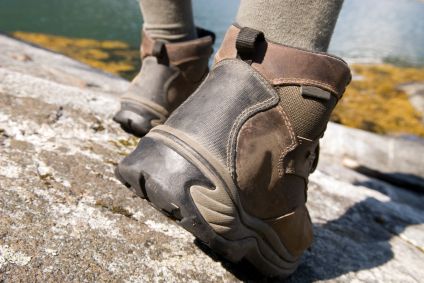
Hiking - Dealing With Blisters
Ouch! You've been on the trail for a few hours and you're on your way back. Unfortunately, you still have a few miles to go and you just noticed you've got blisters. That turns a pleasant hike back into torture.
Blisters are caused by friction between your skin and your sock, and hence from the wall of your hiking boot. Even the best socks and boots will still allow some slippage of your foot inside. That leaves open the possibility of painful friction.
But that problem can be minimized with a good pair of socks. Cotton, wool and silk are the most common traditional materials, but today hikers have a lot more choices. Lycra, various kinds of polyester and many others - especially when they're combined with the traditional materials - do a very good job.
Helping those materials along are new construction methods. Lack of ridges, thicker sections and many other elements help keep socks working to reduce the friction between foot and boot. At the same time, their moisture-wicking and thermal handling properties help improve the environment inside the boot.
You can help minimize the potential problem even further by your selection of hiking boots. Find some that fit right and feel good day one. True, many stiff shoes will loosen a little bit. But most hiking boots stay stiff throughout their lifetime. If they feel uncomfortable, try another. Find some that keep water and gravel out of your boot.
If you take off your boots anytime during your hike, say to put your feet into a creek or just to cool them off, take precautions when re-booting. Dry your feet well and make sure there is no gravel in the boot and no ridges on your socks when you lace up again.
But, even with all that protection the possibility is still there. So, what do you do when they happen anyway?
When you feel a blister start, take off your boot and inspect your foot. Use some water to clean off the area and, if you brought some, disinfect the area with alcohol or anti-bacterial cream.
Puncture the blister horizontally near the base with a disinfected needle. Gently squeeze out the fluid (mostly salt water), but don't remove the skin over the blister. Instead, cover the area with a band-aid, or moleskin. The latter is a kind of artificial 'skin' used like a band-aid.
Once you're home you can do a better job of treatment using anti-bacterial cream such as Benzoin. In some cases you'll want to carefully cut away the skin flap. This is usually only necessary if a large percentage of the skin has become loose from the foot. Otherwise, if you let it alone it will simply fall off or decay naturally.
A little common sense and some good gear selection will help keep you hiking long distances. Don't let a little heat and water ruin your day. As the Boy Scouts say, be prepared.
This Lens is Blessed!
This lens has been blessed by a SquidAngel. Thank you aj2008!!
New Link List
- Hiking and Backpacking With Kids
It awakens something earthy and primal in you and makes you acutely aware of how special every moment is. - Food Preservation for Hiking
Dehydrated foods for camping and hiking.










